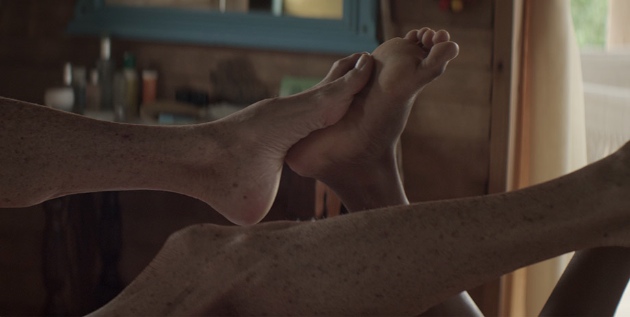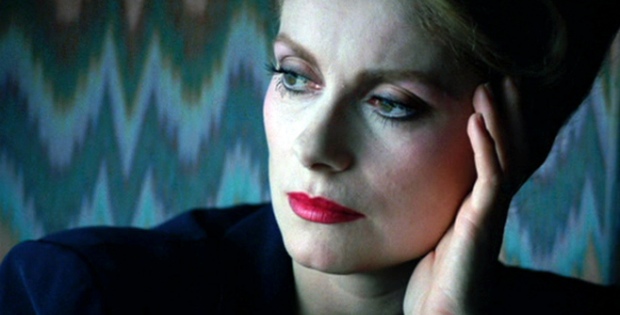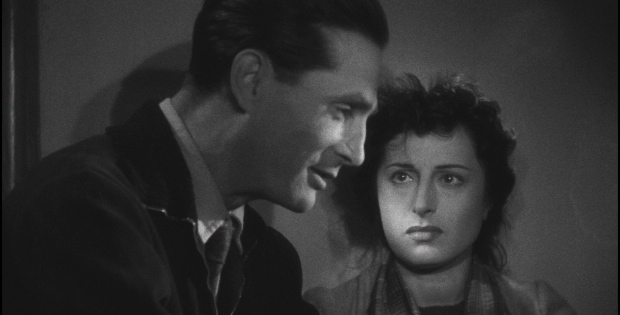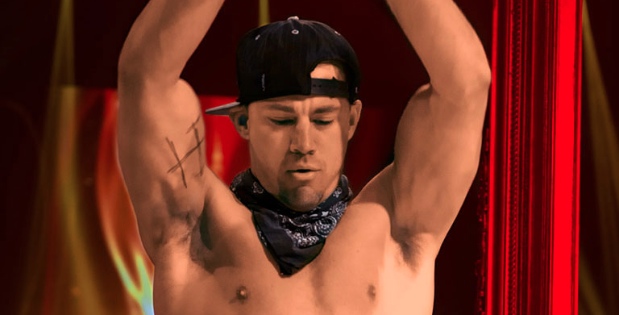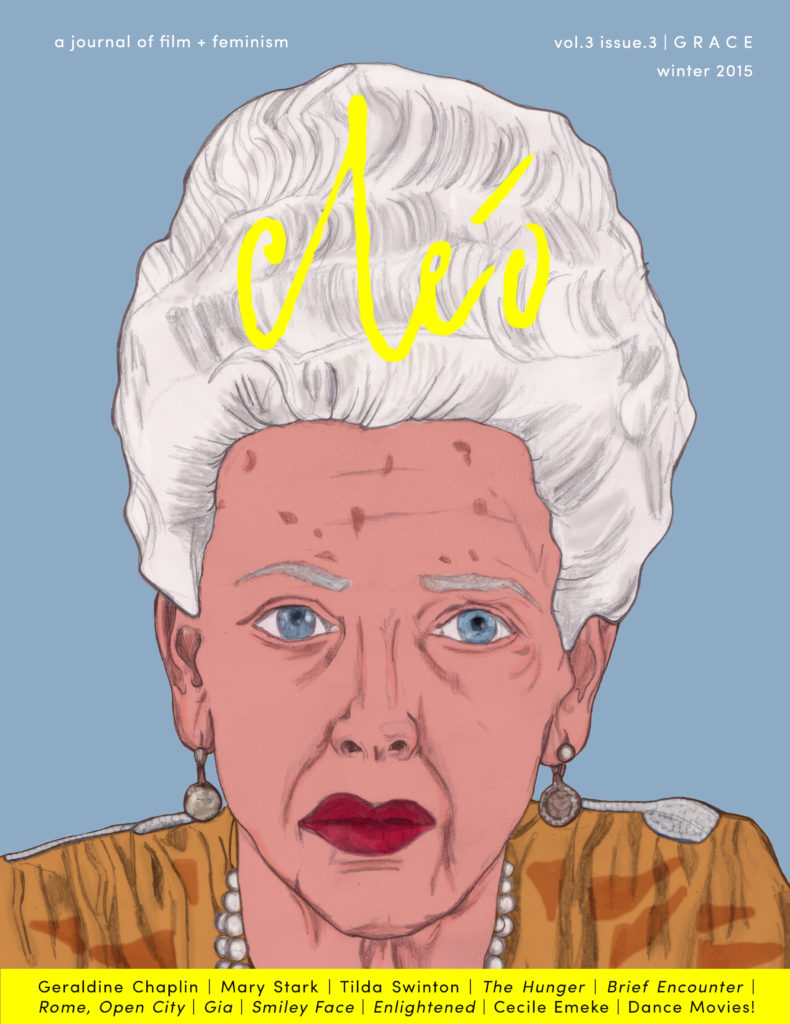
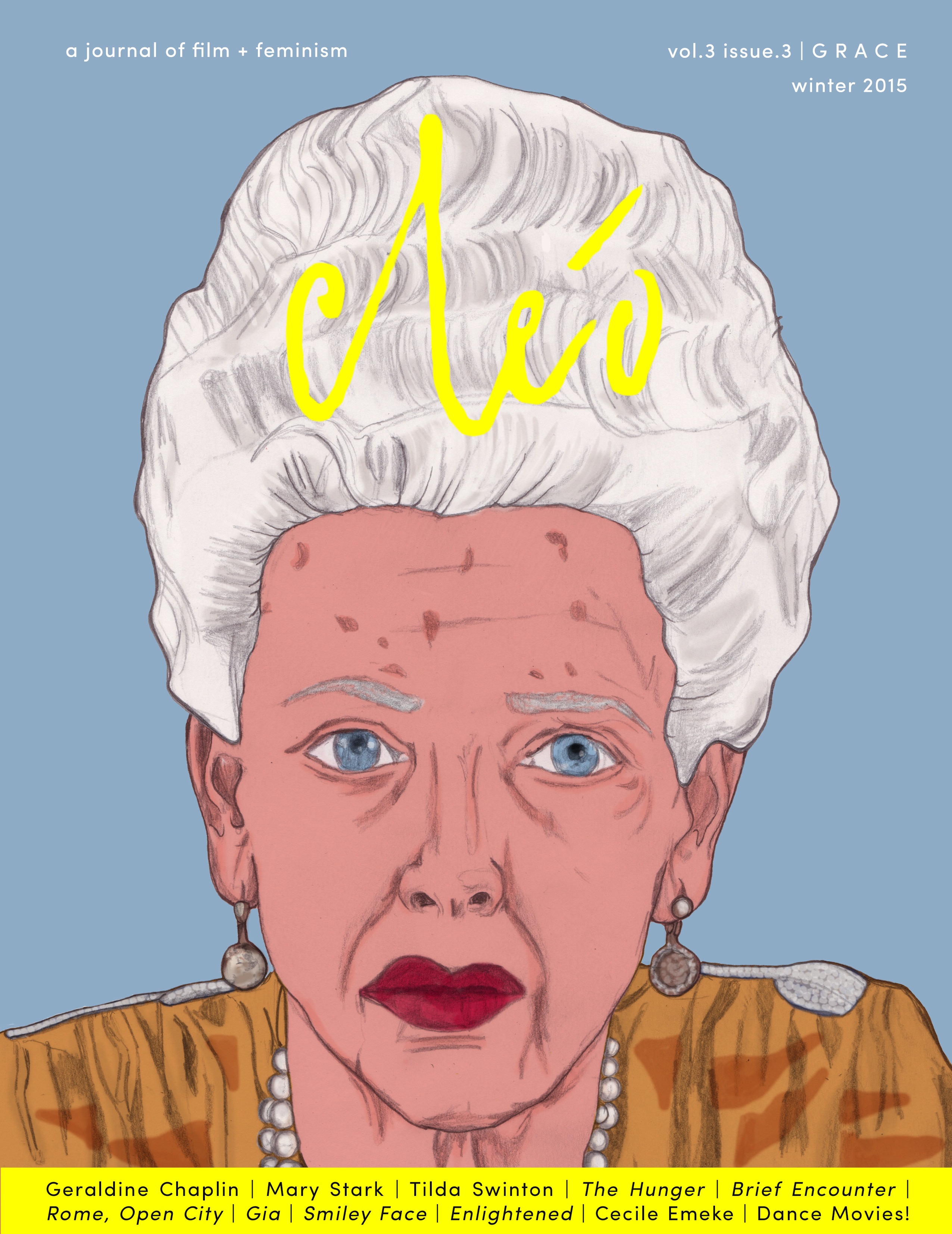
The word grace might recall an actor’s perfect poise — à la Lupita Nyong’o post-Oscar fashion spreads — or evoke an image of old-Hollywood style embodied by Grace Kelly or Sophia Loren. In our ninth issue of cléo, we want to think about what is the it they exude? Is gracefulness synonymous with femininity? Or, what if you had grace, but lost it due to age or illness? Take a look at cinema’s “comic klutzes” — Melissa McCarthy, Anne Hathaway, Julia Roberts, Sandra Bullock — and tell us what you see. And let’s not forget film’s bad bitches — its crummy moms, scrapers, and butch babes — who challenge and resist the moniker of grace.
Grace can also refer to faith, belief, and the leaps that spirituality asks of us. Whether it be Terrence Malick’s pious Tree of Life (2011) or the varying shades of devotion in Lars von Triers’ Breaking the Waves (1996), we’d like to be enlightened. On yet another note, Wim Wenders’ Pina (2011) uses 3D technology to revel in the gracefulness of the kinetic body, and we’re interested in dance’s relationship to the film form. Does cinema inherently possess a grace of its own?
Cover art: Soraya Gilanni Viljoen is a multi-disciplinary Art Director and Creative. You can view her work at www.this-ness.com
Artist’s Statement:
I liked the idea of exploring women “who challenge and resist the moniker of grace,” as posed by cléo’s call for submissions. I started thinking about vast scenes of chaos caused by some comic klutzes, and then the tentative fragility of the word grace. However, when I found out that the issue included an essay on Tilda Swinton, deciding on what to draw for the cover became easy. I started to realize that grace is robust, fluid; more brave and less fragile or ephemeral than I thought. Swinton is inimitable, and seems to create simultaneously authentic and theatrical presentations of her intimate self. Speaking well is living well, and so is finding a strong and nuanced–close–external presentation of your identity. I think this is some of the poise that makes grace, because it is not a fixed or false state but an active, alert, receptive, open one.
I loved Swinton’s prosthetic turn in The Grand Budapest Hotel (2014), looking like someone buried alive, taking the living decay of aging to its extremity. You can’t forget the look in her myopic eyes, clinging to the love and attention of M. Gustave (Ralph Fiennes) with the tension of a teenager. Together, Wes Anderson and Swinton create a character alive to the dismay of a self-knowledge and pushed just far enough away as to be out of sight, but troubling nonetheless.


